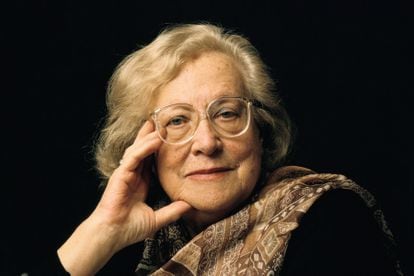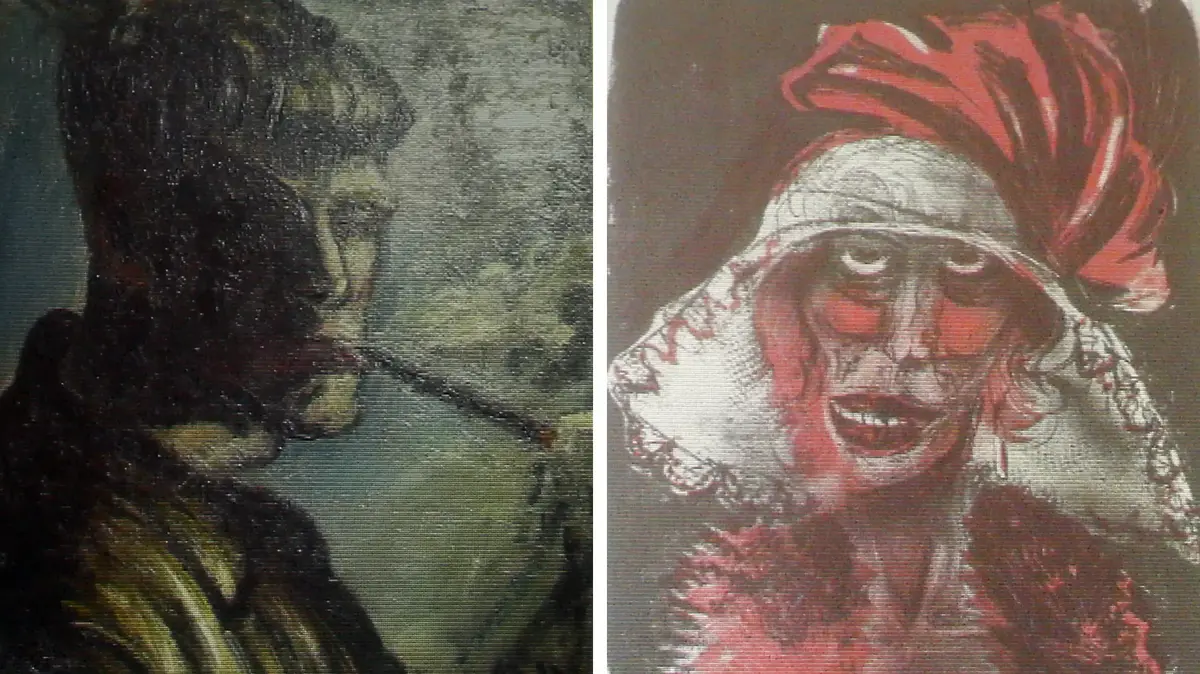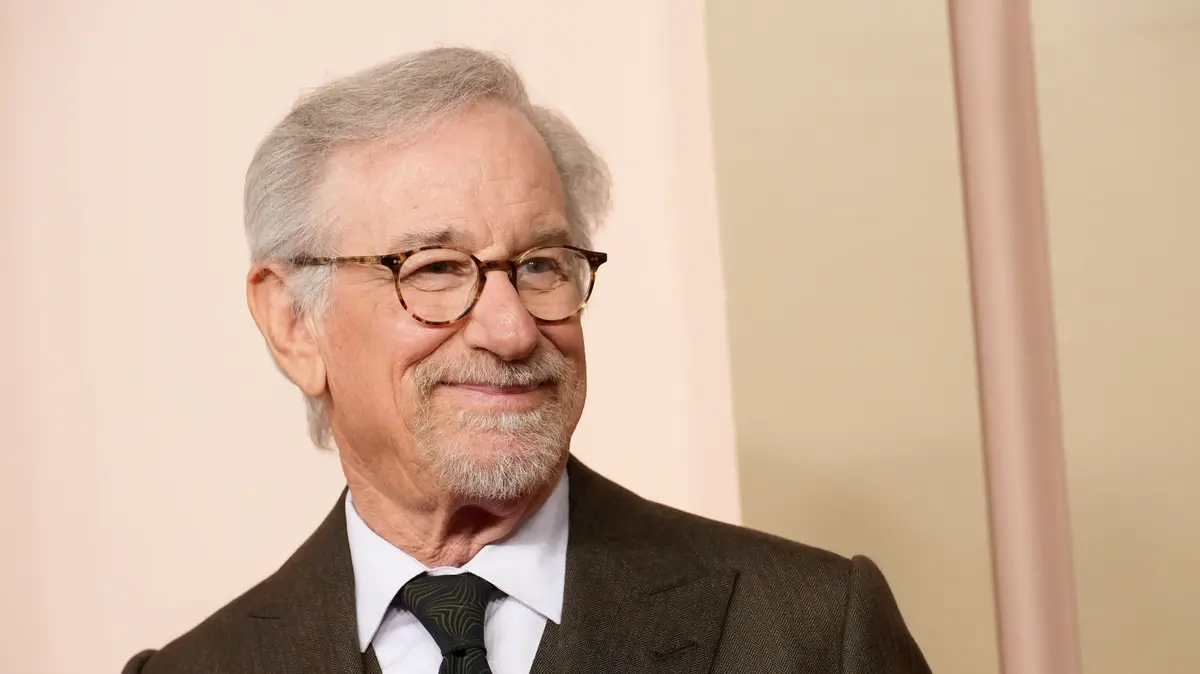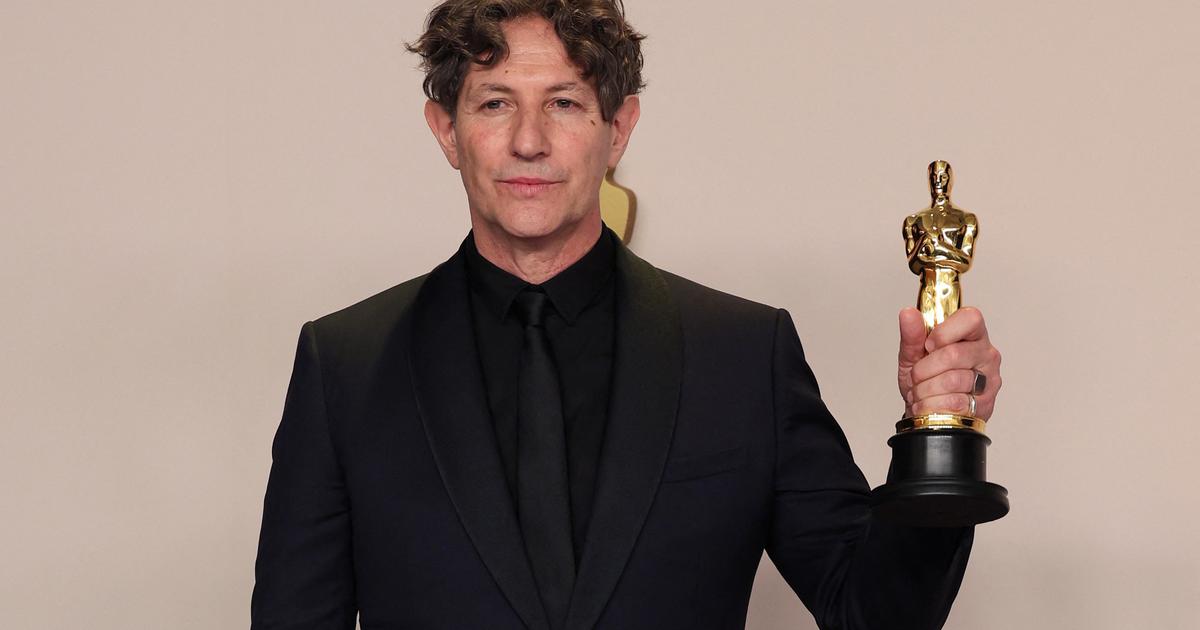Shimon Redlich, an 87-year-old Holocaust survivor, author of the book
Together and apart in Brzezany
, explains: “As long as there are survivors alive and their memory works, their testimonies must be recorded.
Every story is unique."
Edith Bruck, 90-year-old Auschwitz survivor, Hungarian writer in Italian, author of classics such as
Who loves you like this
(Ardicia) or
Il pane perduto
, noted in a recent interview: “Our lives don't belong to us.
They belong in history."
The survivors of the Shoah have allowed us to peek into the abyss of the incomprehensible, glimpse the nonsense of violence and extermination, they have brought generations of readers closer to an experience that can be transmitted, but not shared.
However, as the years go by, the era of the witnesses is coming to an end and, with them, something irreplaceable will disappear.
Most of those who survived the Nazi terror as adults have passed away and the time is drawing near when their words and images will remain, but not their looks.
More information
The image that sums up the 'Holocaust of bullets'
Boris Pahor passed away last May at the age of 108.
A Slovenian born in Trieste, Pahor was deported as an anti-fascist resistance fighter and is the author of one of the great books on the Nazi camps,
Necropolis
(Anagram).
"My every word would then be controlled by the fear of slipping into banality," he writes.
“And also about death, as well as about love, one can speak only with oneself and with the loved one with whom he has merged.
Neither death nor love bear witnesses.
The fear of banality and the impossibility of transmitting what has been suffered are a constant in literature on the Holocaust since the publication of the first great literary testimony of the camps,
If this is a man,
by Primo Levi.
Cousin Levi, at home, in 1987. Alamy
Another fear that many witnesses have conveyed is the hole they will leave when the last of them disappears, the uncommunicable experience they will take with them.
This is how the Spanish writer and politician, Buchenwald survivor, Jorge Semprún, who died in 2011, explained it in an interview with this newspaper in 2000 when he reflected on the inexorable disappearance of the survivors: “Do you know what is the most important thing about having for a field?
Do you know that this, which is the most important and the most terrible thing, is the only thing that cannot be explained?
The smell of burning meat.
What do you do with the memory of the smell of burning meat?
For those circumstances, there is, precisely, literature.
But how do you talk about it?
Do you compare?
The obscenity of the comparison?
Do you say, for example,
that smells like burnt chicken?
Or do you try a reconstruction of the general circumstances of the memory, going around the smell, round and round, without facing it?
I have inside my head, alive, the most important smell of a concentration camp.
And I can't explain it.
And that smell is going to go away with me as it has already gone with others”.
“We have been talking about the end of the witnesses for almost three decades,” says Alejandro Baer, professor of Sociology and director of the Center for Holocaust and Genocide Studies at the University of Minnesota (USA).
“That concern has spurred memory in the form of the creation of archives of oral and audiovisual history of survivors, documentaries, even virtual reality projects.
But whoever has had the opportunity to meet the witnesses knows that nothing is going to make up for his absence.
Because it is not just about the information they provide, but about the nature of the encounter and the transformation it produces: becoming a witness of the witness.
If we look for something that approaches that experience, we will not find it in technology but in the testimonial literature”.
If This Is a Man
was published in 1947 and Levi himself explained that the publisher went bankrupt and that the book remained forgotten for more than a decade: the first print run of 2,500 copies went unnoticed.
Society was not yet ready to read those horrors, not only because the great stories about the extermination confront us with the idea that anyone can be a victim, but because they force us to consider that we could also have been executioners.
That same year, this Saturday exactly 75 years ago, it was published in the Netherlands under the title of
The Secret Annex
Ana Frank's diary.
Its translation was rejected by various American publishers until Knopf's Judith Jones insisted on publishing it and it became an international success in the 1950s.
In the then Federal Republic of Germany, Auschwitz did not become a household name for most of the population until the late 1970s, when the series
Holocaust
was released .
The writer Ida Fink, photographed in 1994. Ulf Andersen (Getty Images)
That five-episode telefilm sparked a heated debate between those who saw it as a product of popular culture that trivialized the Holocaust by turning it into a family melodrama and those who thought it did more than any eyewitness accounts to make Germans stand up to his darkest past.
“It is an insult to those who survived.
What appears on the screen has nothing to do with what happened,” wrote Nobel Peace Prize winner and Auschwitz survivor Elie Wiesel, author of
Night, Dawn, Day
(Austral).
However, a survey published after its broadcast revealed that 70% of German young people between the ages of 14 and 19 said that they had learned more about Nazism from the series than at school.
Actually, it is a question of a discussion that had already begun when, at the end of World War II, the horror of the camps was discovered in all its dimensions: Is it legitimate to put oneself in the shoes of someone who has suffered something that cannot be explained? ?
Is it possible to make fiction with the Holocaust?
John Hersey, the author of
Hiroshima , wrote the first American novel about extermination,
The Wall,
in the 1940s and 1950s .
which took place in the Warsaw ghetto.
This journalist, who had interviewed the victims of the atomic bombing, bypassing military censorship, met with survivors and had visited the ruins of the Polish capital.
Yet he was faced with these same issues.
“It was raised who owns that narrative.
Can a young privileged white Anglo-Saxon from New England put himself in the shoes of European Jewry suffering under Nazism?” wrote his biographer Jeremy Treglown.
Photo montage made by Diego Quijano from an image of children imprisoned in Auschwitz on the day of the liberation of the camp, on January 27, 1945. Galerie Bilderwelt (Getty Images)
For a few years, especially since the success of
The Boy in the Striped Pajamas
, this debate has only grown because novels with Auschwitz in the title have multiplied.
The last one is called The Auschwitz Dressmakers, although there are also
The Auschwitz Dancer, The Auschwitz Pharmacist
... Some, like
The Auschwitz Librarian
(Planet)
by the Spanish Antonio Iturbe, which has sold half a million copies, are stories written from the rigor.
Others, such as
The Auschwitz Tattoo Artist
, have been heavily criticized by experts.
The Auschwitz Memorial made a resounding statement about this Heather Morris
bestseller
: "Because of the number of factual errors, it cannot be recommended as a valuable work for those wishing to understand the history of the camp."
This is not to say that fictional literature has not produced first-rate works on the Shoah, some of which have become classics, from
The Garden of the Finzi Contini
(Cliff), by Giorgio Bassani, to
Sophie's Choice
(Vertical), by William Styron, or
Austerlitz
(Anagram), by WG Sebald.
"This popular literature, which is so successful, simplifies the history and reality that is so difficult for us to understand," says Yessica San Román, director of the Education and Holocaust area of the Sefarad-Israel Center, who is attending the congress of the International Alliance for the Memory of the Holocaust.
“The result is a trivialization of the facts.
What should concern us when we read books like these about the Holocaust is that they resort too much to stereotypes, both for the Jews and for the perpetrators.
The perpetrators were not all monsters or psychopaths.
They were much more normal than we like to admit.
The Holocaust was committed by men and women.
Spot".
The writer Imre Kertesz, winner of the 2002 Nobel Prize for Literature, pictured in 2009. CENDAMO LEONARDO (Getty Images)
"I haven't read
The Tattoo Artist of Auschwitz
," explains Shimon Redlich.
“I don't like kitsch
books
about the Holocaust.
However, I believe that films like
Claude Lanzmann's
Shoah or Steven Spielberg
's Schindler's List
have had a significant effect on the dissemination and understanding of the Holocaust.
Asked by email about the books he considers essential, he cites four: the works of the historian, and at the same time a survivor still alive, Saul Friedländer,
The Years of Persecution
(1933-1939) and
The Years of Extermination
(1939-1945) — both in Gutenberg Galaxy—;
A life that questions
(Sal Terrae), which is the diary of a victim, Etty Hillesum;
and
Anatomy of a Genocide: The Life and Death of a Town Called Buczacz
, by Israeli historian Omer Bartov.
This book by Bartov, not yet translated into Spanish, is part of a series of recent essays that are helping to deepen our knowledge of the genocide and that mix almost detective investigations with the handling of thousands of documents.
In the face of all-encompassing books like Raul Hilberg
's The Destruction of European Jewry
, a new generation of authors focuses on only seemingly small stories.
In Spain, two particularly relevant ones have recently been published:
After the diary of Anne Frank
(Kalandraka), by Bas Benda-Beckmann, which reconstructs the life and death in the extermination camps of those who hid in the back room, and
La pit
(Confluences / Centra Sefarad Israel), in which, through an atrocious photograph of a shooting in the Ukraine, the historian Wendy Lower recounts the so-called Holocaust by bullets.
Entrance to the Auschwitz-Birkenau camp, in the summer of 1944.Alamy Stock Photo
“Most of the witnesses have disappeared and the investigators must become indirect witnesses, with the material they handle,” Lower, director of the Mgrublian Center for Human Rights in Claremont, California, explains by phone.
“We work with the material we have access to, with documents like the photo to which I dedicate my book.
The last decades we have been compiling documents, testimonies.
Such massive archives have been amassed and so many testimonies have been recorded that no historian would be able to listen to them all.
When there are no more witnesses, there will be a lot of material to work on: archaeology, forensics, documents, recordings…”.
However, eyewitness memories have not always been considered such important material.
“In the beginning, when researchers strove to establish the history of the Nazi genocide, they did not always welcome the voices of the survivors,” says Sara R. Horowitz, a professor of literature at York University in Toronto and the author and editor of numerous books. on Holocaust memory, including
Voicing the Void: Muteness and memory in Holocaust fiction
and
Shadows in the City of Light
.
“Historians preferred to rely on documentary evidence and were reluctant to base historical accounts on memory: they saw it as unreliable, fallible, and limited in scope.
But relying on documents also has its limitations.
In the decades immediately following the war, many survivors expressed frustration that they had not been heard.
And the historical record was impoverished by this exclusion.”
“More than ever, it will be the power of literature – novels, poems, memoirs – that will preserve and continue to shape the memory of the Holocaust, above the different languages and the memory of each country.
Writers like Aharon Appelfeld, Ida Fink, Elie Wiesel, Charlotte Delbo, Jorge Semprún, Sarah Kofman, Imre Kertesz and others”, continues Sara R. Horowitz.
"Literature is essential," says Marina Sanfilippo, professor at UNED, expert in female testimonies of the Shoah and prologue writer of Edith Bruck's book.
“It has never been possible to understand the reason for the Holocaust, as Primo Levi narrated in that famous phrase in which a German guard blurts out that there are no whys in Auschwitz.
It is something that only literature can answer.”
Academic and author Ruth Klüger, who died in 2020. Getty
Marina Sanfilippo maintains that she has studied the literature written by surviving women “because the canon of the Shoah is above all masculine” —Primo Levi, Paul Celan, Kertesz, Elie Wiesel, Victor Klemperer, Viktor Frankl…—.
She cites authors such as Liana Millu,
The Smoke of Birkenau
(Cliff);
Ruth Klüger,
Go On Living
(Password);
Charlotte Debo,
None of us will return
(Asteroid Books), or Daniela Padoan,
Like a Frog in Winter
, published by Altamarea (a publisher specializing in Holocaust that has just released
El camino a casa
, by Henriette Roosenburg, and an unpublished book by Primo Levi,
Auschwitz, quiet city
).
Helga's Diary
(Sixth Floor), by survivor Helga Weiss
, has also been reissued .
Padoan's book is a journalistic investigation that collects the testimony of three women —Liliana Segre, Goti Bauer and Giuliana Tedeschi— who survived Auschwitz-Birkenau.
“The experience was very different for men and women, because in the camps people suffered from the body and bodies are different.
What did it mean to have the rule in the field?
And stop having her, thinking that they would never be able to have children?
What does it mean to be the subject of medical experiments?
The survival strategies were also different”, continues Sanfilippo.
The electrified barbed wire that separated men and women in an unmarked Nazi concentration camp.
Hulton Deutsch (Corbis via Getty Images)
And the voice of the witnesses also continues through the stories of their relatives.
The most famous of these books remains the comic book
Maus
(Reservoir Books), now a classic, in which Art Spiegelman recounts the story of his father, an Auschwitz survivor, and at the same time the relationship, not always easy, between both.
The librarian Javier Fernández Aparicio maintained a reading club dedicated to genocide in Madrid for eight years together with Javier Quevedo Arcos, from which the book
La cultura del abyss emerged.
Readings of the Holocaust
(Riopiedras Editions).
He assures that no book interested as much as
Maus,
perhaps because of its dialogue between the past and the present and because of the feeling that the past is floating over the future that emerges from Spiegelman's work.
In the house where Primo Levi died in 1987 on a wide avenue in Turin – it will never be known if he committed suicide or fell down the stairs – no plaque remembers the writer.
However, as he approaches, Levi's last name appears on the intercom.
As if he could be called and his voice emerged from the past to remind us of some of the many lessons contained in his books, for example his mistrust of charismatic leaders, of those who ask to renounce reason.
“Since it is difficult to distinguish true prophets from false ones, it is better to suspect every prophet;
it is better to renounce the revealed truth.”
The voices of those survivors that are slowly dying out remain essential to understand what happened, but also to warn us about what may happen.
You can follow BABELIA on
and
, or sign up here to receive
our weekly newsletter
.
50% off
Exclusive content for subscribers
read without limits
subscribe
I'm already a subscriber









/cloudfront-eu-central-1.images.arcpublishing.com/prisa/7C3LUM4R75AU5MMLTKFXM4GDUA.jpg)